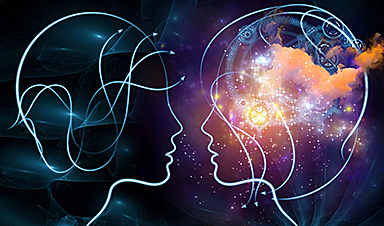Study of nose and throat reveals why people with COVID-19 may lose their sense of smell
Researchers studying tissue removed from patients’ noses during surgery believe they may have discovered the reason why so many people with COVID-19 lose their sense of smell, even when they have no other symptoms.
In their experiments they found extremely high levels of angiotensin converting enzyme II (ACE-2) only in the area of the nose responsible for smelling. This Enzyme is thought to be the ‘entry point’ that allows coronavirus to get into the cells of the body and cause an infection.
The researchers say their findings, published today (Wednesday) in the European Respiratory Journal [1], offer clues as to why COVID-19 is so infectious and suggest that targeting this part of the body could potentially offer more effective treatments.
The study was by Professor Andrew P. Lane, director of the division of rhinology and skull base surgery, and Dr Mengfei Chen, research associate, and colleagues from Johns Hopkins University School of Medicine, Baltimore, USA.
Professor Lane said: “I specialise in nasal and sinus problems, so the loss of the sense of smell in COVID-19 is of particular clinical interest to me. While other respiratory viruses generally cause loss of the sense of smell through obstruction of airflow due to swelling of the nasal passages, this virus sometimes causes loss of smell in the absence of other nasal symptoms.”
The team used tissue samples from the back of the nose of 23 patients, removed during endoscopic surgical procedures for conditions such as tumours or chronic rhinosinusitis, an inflammatory disease of the nose and sinus. They also studied biopsies from the trachea (windpipe) of seven patients. None of the patients had been diagnosed with coronavirus.
In the lab, the researchers used fluorescent dyes on the tissue samples to detect and visualise the presence of ACE2 under a microscope and compare levels of ACE2 in different cell types and parts of the nose and upper airway. [2]
They found by far the most ACE2 on the lining cells of the olfactory epithelium, the area at the back of the nose where the body detects smells. The levels of ACE2 in these cells was between 200 and 700 times higher than other tissue in the nose and trachea….
Image Credit: Amanda Scott/Envato
Thanks to Heinz V. Hoenen. Follow him on twitter: @HeinzVHoenen
News This Week
Scientists Have Discovered Toxic “Forever Chemicals” in Bottled Water
Scientists have found toxic PFAS in drinking water samples from around the world, with higher levels in tap water from China compared to the UK. Boiling water or using a filtration jug can reduce [...]
Urban Microbes Are Eating Disinfectants – Are We Fueling a New Health Threat?
New research reveals that microbes in urban environments are evolving to withstand the very cleaning agents designed to eliminate them. The study also uncovers new strains in Hong Kong, previously only found in the [...]
Startling Study Shows High-Potency Cannabis Alters DNA
The study shows that frequent use of high-potency cannabis alters DNA, affecting genes related to energy and immune function. These changes differ between those with and without psychosis, suggesting cannabis use could influence mental health through biological [...]
New nanotherapy targets artery inflammation in cardiovascular disease
Inflammation of the arteries is a primary precursor and driver of cardiovascular disease—the No. 1 killer of people in the United States. This inflammation is associated with the buildup of dangerous plaque inside the [...]
Revolutionary Nanoparticle Therapy for Prostate Cancer
A groundbreaking research effort involving teams from the University of Virginia, Mount Sinai, the University of Michigan, the University of Texas, and others has displayed the clinical efficacy of an innovative therapy that utilizes nanoparticles and [...]
Antibody engineering drives innovation in drug development
Monoclonal antibodies (mAbs) are used to prevent, detect, and treat a broad spectrum of non-communicable and communicable diseases. Over the past few years, the market for mAbs has grown exponentially with an expected compound [...]
Breakthrough Study Reveals How Bladder Cancer Starts and Spreads
Researchers found that DNA mutations from antiviral enzymes and chemotherapy fuel early bladder cancer, while abnormal circular DNA in tumor cells drives resistance to therapy. These discoveries open new therapeutic avenues. A groundbreaking study led by [...]
AI and Quantum Mechanics Accelerate Drug Discovery
A recent article published in the Journal of Chemical Information and Modeling researchers at Southern Methodist University (SMU) have developed SmartCADD, an open-source virtual tool designed to speed [...]
Targeting ‘undruggable’ diseases: Researchers reveal new levels of detail in targeted protein degradation
Researchers at the University of Dundee have revealed in the greatest detail yet the workings of molecules called protein degraders which can be deployed to combat what have previously been regarded as "undruggable" diseases, [...]
Revolutionizing Virology: AI Discovers Over 160,000 New RNA Viruses
Largest discovery of new virus species sheds light on the hidden virosphere. Artificial intelligence (AI) has been used to reveal details of a diverse and fundamental branch of life living right under our feet and in every [...]
Cardiac Crisis: COVID-19 Doubles Risk of Heart Attacks, Strokes, and Death
Research indicates that COVID-19 survivors face doubled risks of severe cardiac events for years after recovery, especially if hospitalized. People with A, B, or AB blood types are particularly vulnerable, highlighting the need for personalized approaches [...]
AI steps into science limelight with Nobel wins
For long periods of its history, artificial intelligence has lurked in the hinterland of science, often unloved and unfunded—but two Nobel prizes in one week suggest its time in the sunshine has finally arrived. [...]
MIT Scientists Shed New Light on the Critical Brain Connections That Define Consciousness
A new study provides further evidence that consciousness depends on communication between the brain’s sensory and cognitive regions in the cortex. Our brains are constantly making predictions about our surroundings, enabling us to focus [...]
Common Chemicals Found in Shampoo and Plastic Could Be Quietly Disrupting Your Heart’s Rhythm
UC study of Fernald data links environmental phenols to heart toxicities Environmental phenols are present in numerous everyday consumer products, serving as preservatives in packaged foods, parabens in shampoos, and bisphenol A (BPA) in [...]
Revolutionary Brain Tech Offers New Hope for Stroke and Injury Recovery
University of Pittsburgh researchers report that deep brain stimulation (DBS) can effectively enhance motor functions in individuals with arm and hand paralysis due to brain injuries, with promising results from early human and monkey [...]
NIH Scientists Discover Gene Responsible for Rare Eye Disease
Findings supported by the NIH pave the way for the development of genetic testing, clinical trials, and therapies. Researchers at the National Institutes of Health (NIH) and their collaborators have discovered a gene linked to certain [...]






















